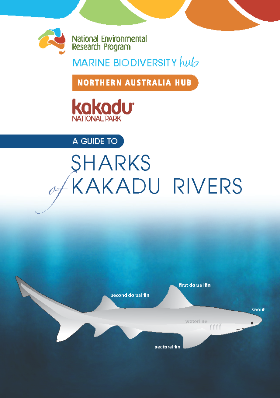 A Guide to Sharks of Kakadu Rivers
A Guide to Sharks of Kakadu Rivers
-
A Guiide to Sharks of Kakadu Rivers
- web, print quality or request a hard copy
Largetooth Sawfish Pristis pristis
Conservation Status:
IUCN Red List of Threatened Species: Critically Endangered
Commonwealth: Vulnerable
Northern Territory: Vulnerable
Description: The Largetooth Sawfish is a large sawfish with 17-23 evenly spaced teeth on each side of the rostrum, with the teeth starting near rostral base, a dorsal fin beginning well forward of the pelvic fins, and a small lower lobe to the caudal fin.
Size: Born at about 70-90 cm in length and reported to reach 700 cm, although sizes that big are rarely seen.
Notes: A unique sawfish in that it spends 4-5 years in rivers and billabongs as juveniles before moving out to sea. It is known from various rivers across northern Australia, as well as from estuaries and coastal environments. This species has suffered considerable declines across the rest of its Indo-West Pacific range, and northern Australia represents a remaining population stronghold. In the Indo-West Pacific region, this species was formally called the Freshwater Sawfish Pristis microdon; see news story here.
Image credit: Kate Buckley, Territory Wildlife Park
 Download the Largetooth Sawfish Information Sheet
Download the Largetooth Sawfish Information Sheet
 Download the Largetooth Sawfish Life History Overview
Download the Largetooth Sawfish Life History Overview
 Dwarf Sawfish Pristis clavata
Dwarf Sawfish Pristis clavata
Conservation Status:
IUCN Red List of Threatened Species: Critically Endangered
Commonwealth: Vulnerable
Northern Territory: Vulnerable
Description: The Dwarf Sawfish is a relatively small sawfish with 18-22 evenly spaced teeth on each side of the rostrum, with the teeth starting near the rostral base, a dorsal-fin origin over or slightly behind the pelvic-fin origin, and a feeble lower lobe to the caudal fin.
Size: Born at 60-81 cm in length and attains at least 318 cm.
Notes: The exact range of the Dwarf Sawfish is uncertain. There are a handful of historical records from outside of Australia, but it is possibly now found only in northern Australian waters. Despite claims from the east coast of Australia, it has not been confirmed there and so may be restricted to the Gulf of Carpentaria, west across to the Top End to the Kimberley. It occurs in coastal and estuarine environments, and penetrates upstream into rivers, but not into freshwater.
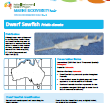 Download the Dwarf Sawfish Information Sheet
Download the Dwarf Sawfish Information Sheet
 Green Sawfish Pristis zijsron
Green Sawfish Pristis zijsron
Conservation Status:
IUCN Red List of Threatened Species: Critically Endangered
Commonwealth: Vulnerable
Northern Territory: Vulnerable
Description: The Green Sawfish is a large sawfish with 24-28 unevenly spaced teeth on each side of the rostrum, with the teeth starting near the rostral base, a dorsal-fin origin slightly behind the pelvic-fin origin, and a feeble lower lobe to the caudal fin.
Size: Born at about 80 cm in length and attains at least 540 cm.
Notes: The Green Sawfish is/was widely distributed in the Indo-West Pacific, but it has suffered considerable declines across most of its range, with northern Australia a remaining population stronghold. It was the most temperate occurring sawfish in Australia but it is now considered Extinct in New South Wales.
 Narrow Sawfish Anoxypristis cuspidata
Narrow Sawfish Anoxypristis cuspidata
Conservation Status:
IUCN Red List of Threatened Species: Critically Endangered
Commonwealth: Not Listed
Northern Territory: Not Listed
Description: The Narrow Sawfish is a relatively small sawfish and the only sawfish with no teeth on the basal quarter of the rostrum. It is also distinguished from all other sawfish by the relatively enlarged lower lobe of its caudal fin.
Size: Born at about 70 cm in length and reported to attain about 350 cm in Australian waters.
Notes: The Narrow Sawfish is wide-ranging in the Indo-West Pacific region from the Red Sea to Japan and south to Australia, where it occurs across the tropics. The most productive of the sawfishes and so populations are more robust to declines that have occurred in other sawfishes, although it is still threatened and populations have been reduced.
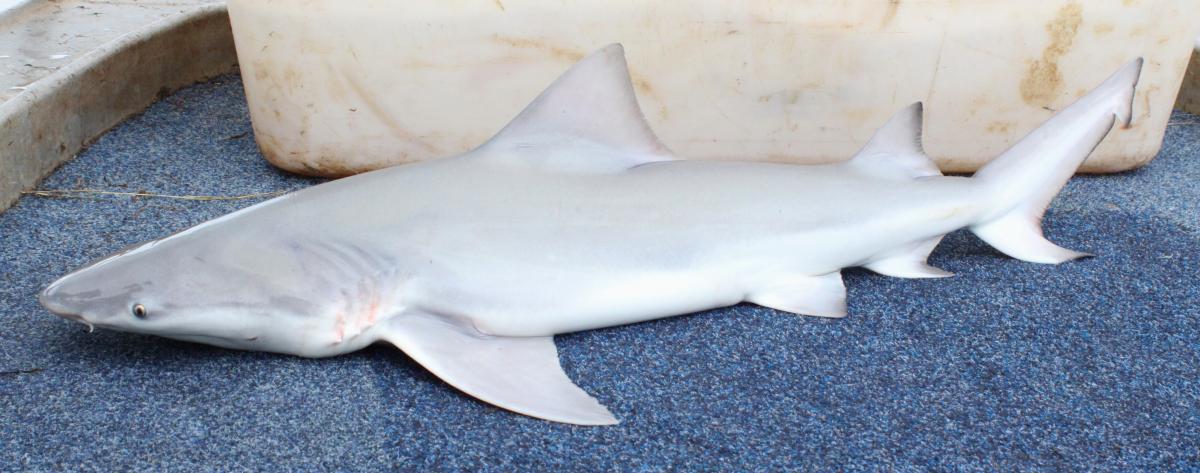 Speartooth Shark Glyphis glyphis
Speartooth Shark Glyphis glyphis
Conservation Status:
IUCN Red List of Threatened Species: Endangered
Commonwealth: Critically Endangered
Northern Territory: Vulnerable
Description: The Speartooth Shark is thought to be a large whaler shark. It is characterised by small eyes, a second dorsal fin, which is more than half the height of its first dorsal fin, a broadly rounded snout, and upper teeth which are triangular and serrated, and broader than the lower teeth. The 'watermark' marking on the side of the head extends only marginally below the eyes.
Size: Born at about 50 cm in length and thought to reach 250-300 cm, but adults of this species have never be observed.
Notes: The Speartooth Shark is only known from nine river systems across northern Australia, although it also occurs in southern New Guinea. Juveniles and subadults occupy the turbid, tidal reaches of large tropical rivers, and adults are presumably coastal and marine.
 Download the Speartooth Shark Information Sheet
Download the Speartooth Shark Information Sheet
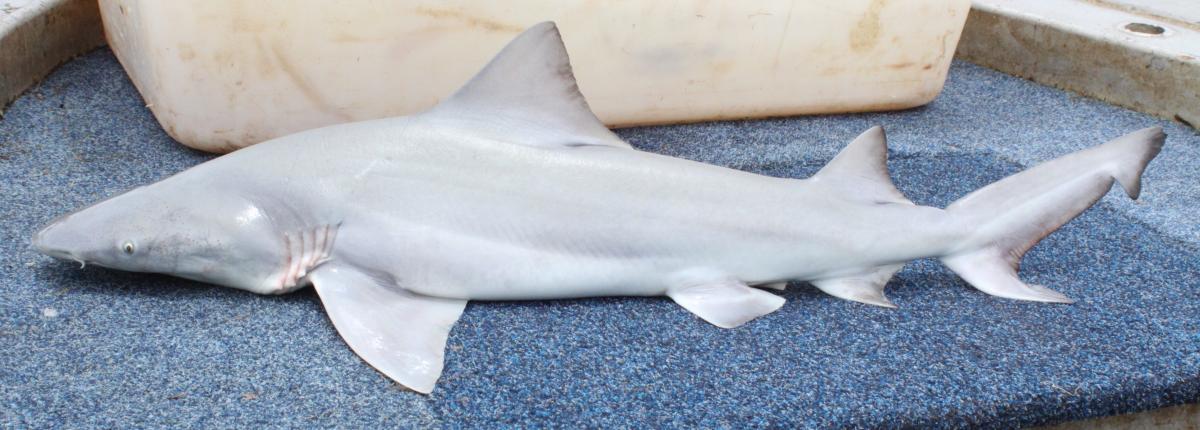 Northern River Shark Glyphis garricki
Northern River Shark Glyphis garricki
Conservation Status:
IUCN Red List of Threatened Species: Critically Endangered
Commonwealth: Endangered
Northern Territory: Endangered
Description: The Northern River Shark is a rather large whaler shark. It is characterised by its small eyes, a second dorsal fin which is three-quarters the height of the first dorsal fin, a short and broadly rounded snout, and upper teeth which are triangular and serrated, and which are broader than the lower teeth. The 'watermark' marking on the side of the head extends well below the eyes.
Size: Born at 50-60 cm in length and reaches about 250-300 cm.
Notes: The Northern River Shark is found only in a small number of rivers and estuaries across northern Australia and southern New Guinea. In Australia, it has a limited range in the Northern Territory and northwestern Western Australia.
 Download the Northern River Shark Information sheet
Download the Northern River Shark Information sheet
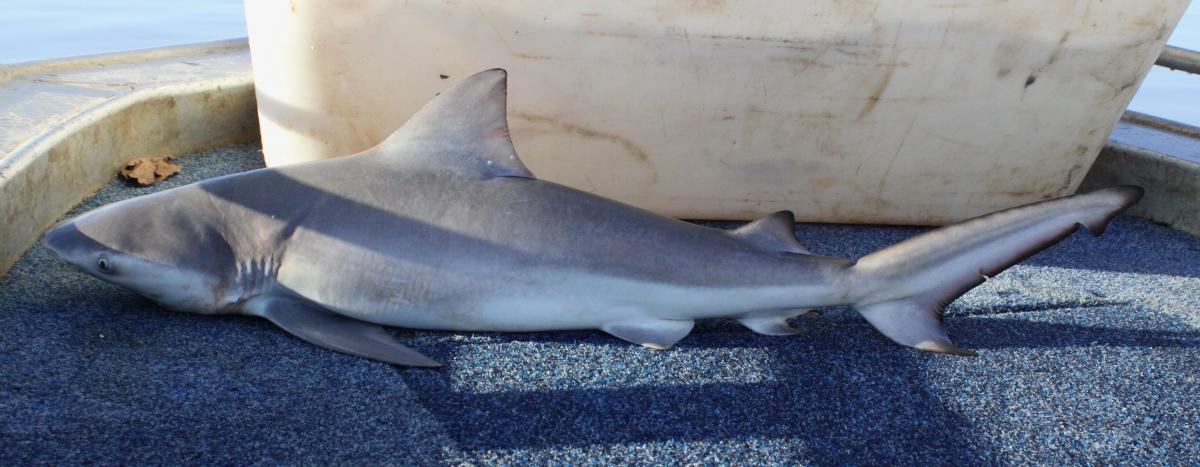 Bull Shark Carcharhinus leucas
Bull Shark Carcharhinus leucas
Conservation Status:
IUCN Red List of Threatened Species: Near Threatened
Commonwealth: Not listed
Northern Territory: Least Concern
Description: The Bull Shark is a large, stout-bodied whaler shark. It is characterised by its short, blunt snout, a rather large second dorsal fin which is mostly more than a third of the first dorsal-fin height, no interdorsal ridge or distinctive fin markings, and broadly triangular, serrated upper anterolateral teeth.
Size: Born at 55-80 cm in length and reaches about 340 cm.
Notes: The Bull Shark is a globally distributed species in tropical and warm temperate seas. In Australia, it occurs across the north from between Sydney and Perth. It occupies a wide variety of habitats including rivers (as juveniles), estuaries, coasts and marine environments down to depths of at least 150 m. It is the only widely distributed shark, which penetrates far into fresh water for extended periods.
Freshwater Whipray Himantura dalyensis
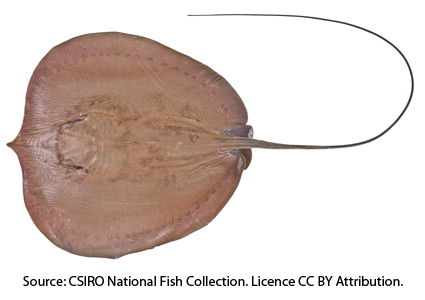
Conservation Status:
IUCN Red List of Threatened Species: Data Deficient
Commonwealth: Not listed
Northern Territory: Data Deficient
Description: The Freshwater Whipray is a unique stingray with an almost round, plain coloured disc with a small but pronounced snout tip, and a long whip-like tail which does not have cutaneous folds.
Size: Size at birth and maximum adult size is unknown, but it is known to reach at least 124 cm disc width.
Notes: The distribution of this species is poorly known; it was only recently recognised as distinct from its larger Southeast Asian relative, Himantura polylepis. It occurs in northern Australia, and possibly the Fly River basin of southern New Guinea.
Sources:
- Last, PR & Stevens, JD (2009) Sharks and Rays of Australia. 2nd Edition. CSIRO Publishing, Collingwood.
- IUCN (2012) The IUCN Red List of Threatened Species. <http://www.iucnredlist.org>.
- Environment Protection and Biodiversity Act 1999
- Territory Parks and Wildlife Conservation Act 2000
